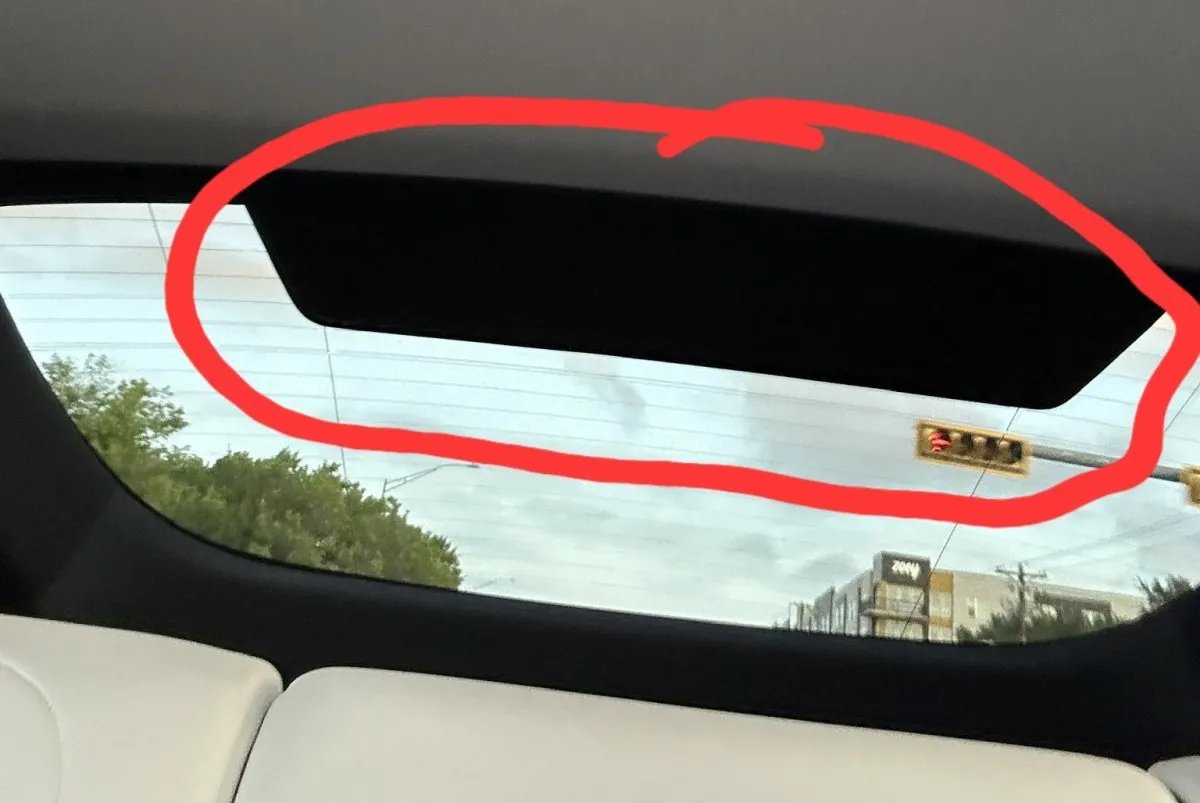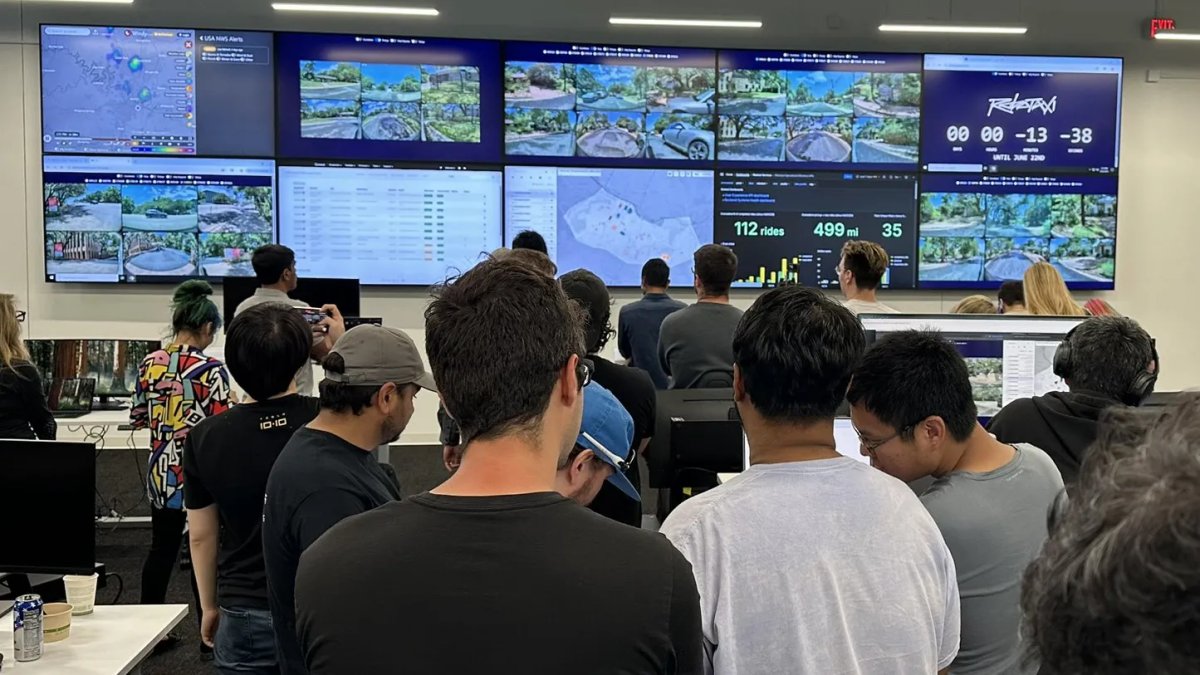테슬라의 '프로젝트 헤일로' 공개: 로보택시 네트워크의 업그레이드된 모델 Y

FSD의 성능이 로보택시 네트워크의 스타였지만, 테슬라가 이 서비스에 개조된 Model Y를 사용할 것이라는 새로운 세부 정보가 나오고 있습니다. Business Insider의 보도에 따르면, Robotaxi를 위해 일부 차량을 개조하는 프로그램은 내부적으로는 "Project Halo"로 알려져 있으며, 단순히 새로운 FSD 버전 이상을 포함합니다.
이러한 세부 정보는 Robotaxi Model Ys에서 발견된 미묘한 물리적 변화들을 연결하는 데 도움이 됩니다.
물리적 단서: 확장된 후면 하우징
오스틴의 예리한 관찰자들은 Robotaxi 차량에서 중요한 물리적 차이점을 금세 알아챘습니다. 바로 후면 창문에 있는 일반보다 큰 하우징입니다. 이는 테슬라가 로보택시 출시를 지원하기 위해 새로운 구성 요소를 통합했다는 추측을 즉각 불러일으켰습니다. 처음에는 테슬라가 출시하는 것처럼 사소한 변경 사항일 것이라고 예상했지만, 이제 새로운 하우징 내부에 정확히 무엇이 있는지 더 잘 파악할 수 있게 되었습니다.
헤일로 통신 장치
내부 소식통에 따르면, 테슬라의 헤일로 차량에는 두 번째 통신 장치가 장착되어 있습니다. 이는 차량 지붕 근처에 단일 장치만 장착된 일반 차량과는 큰 차이점입니다.
보도에 따르면, 이 장치는 두 가지 목적을 수행합니다. 이중화된 고정밀 GPS 데이터를 제공하고, 가장 중요한 것은 차량이 테슬라 로보택시 지원팀과 지속적이고 안정적인 연결을 유지할 수 있도록 하는 것입니다. 여기에는 필요한 경우 원격 조작을 위한 연결도 포함됩니다. 이 하드웨어는 Robotaxi의 시범 단계에서 인간 지원 부분의 물리적 백본이 될 수 있습니다.
Ashok Elluswamy가 공유한 명령 센터 이미지에서 보았듯이, 이 차량들은 여섯 대의 카메라에서 비디오를 스트리밍하고 있어 차량의 단일 셀룰러 모뎀에 너무 많은 부담을 줄 가능성이 있습니다.

Starlink는 아닐 듯
처음에는 Starlink Mini 접시 안테나를 장착했을 것이라고 생각했지만, 이 하우징이 차지하는 공간이 Mini를 설치하기에는 너무 작습니다. 대신, 이 장치는 테슬라가 5G 모뎀을 탑재한 신형 차량 천장에 설치하는 텔레매틱스 제어 장치와 크기가 거의 같습니다. 테슬라는 두 번째 연결을 중복성 확보 또는 데이터 처리량 증가를 위해 사용하고 있을 가능성이 높습니다. FSD의 신속한 개선 작업 진행 중
이 모든 데이터 처리량은 세 번째 목적에도 사용될 가능성이 높습니다. 바로 텍사스 기가팩토리에 있는 테슬라 로보택시 운영 허브에 실시간 데이터 스트리밍을 제공하는 것입니다. 앞서 언급했듯이 이는 반드시 원격 운영 지원용은 아닙니다. 테슬라는 로보택시에서 비디오 데이터를 가져오는 것은 현재 버전의 비지도 자율 주행 FSD를 신속하게 개선하기 위한 것으로 보입니다. 얼리 액세스 테스터들은 테슬라가 단 하루 만에 개선 사항을 발표하고 있다는 것을 알아챘습니다. 즉, 데이터가 차량에서 훈련으로 순식간에 이동하고 있다는 뜻입니다.
어제 로보택시가 정차하는 동안 이 벽(첫 번째 영상)에서 2.5cm 정도 떨어져 있었습니다. 로보택시 네 대가 그렇게 하는 것을 봤습니다.
오늘은 문제가 해결된 것 같습니다. 로보택시 두 대를 봤습니다. 테슬라가 정말 이렇게 빨리 변화를 주는 걸까요? pic.twitter.com/zfdchBL771
하지만 엘론 머스크는 말했습니다!
출시 훨씬 전에 엘론 머스크는 로보택시에 사용될 차량은 공장에서 바로 출고되는, 개조되지 않은 차량일 것이라고 말했습니다. 정확한 사실은 아니지만, 앞으로는 그럴 수도 있습니다.
그렇다면 개조되지 않았다는 주장과 프로젝트 헤일로 하드웨어의 명확한 증거를 어떻게 조화시킬 수 있을까요? 여기서 핵심은 테슬라의 순정 FSD 기능과 상업용 로보택시 서비스 운영에 필요한 운영 하드웨어의 차이에 있습니다.
엘론 머스크의 핵심은 카메라, 센서, FSD 컴퓨터와 같은 기본 FSD 하드웨어가 모든 생산 차량에 기본으로 탑재된다는 것입니다. 성능 측면에서 볼 때, 일반 소비자용 차량은 비감독 FSD를 수행할 수 있습니다.
두 번째 통신 장치는 서비스 하드웨어로 이해하는 것이 가장 좋습니다. 차량 주행 성능을 향상시키지는 않지만, 운영 감독, 원격 지원, 그리고 시범 프로그램에 필요한 대량 데이터 업로드에 필요한 중복 연결을 제공합니다.
이 하드웨어는 테슬라가 가까운 미래에 상업용 자율주행차 서비스에 대한 규제 준수 요건을 충족하는 데에도 필요할 수 있습니다.
이 차량들은 공장에서 바로 출고되는 개조되지 않은 테슬라 차량이며, 이는 모든 테슬라 차량이 비감독 자율주행이 가능하다는 것을 의미합니다! https://t.co/n94ln0Uas6
카메라 세척
Business Insider 보도는 Halo 차량에 자체 세척 카메라가 탑재될 것이라고 언급했습니다. 이는 새로운 하드웨어 기능이 아니라, Robotaxis가 전면 카메라를 완벽하게 세척할 수 있는 소프트웨어 기능을 지칭하는 것으로 보입니다. [비디오 및 세부 정보] 이 기능은 결국 개인 차량에도 적용될 예정입니다.
결론
프로젝트 Halo와 관련 특수 하드웨어에 대한 내부 확인은 Tesla가 Robotaxi를 통해 정확히 무엇을 하고 있는지 더욱 명확하게 보여줍니다. 현재로서는 단순히 고급 하드웨어를 탑재한 일반 소비자용 차량이 아니라, 시범 출시를 지원하기 위해 아주 약간만 개조된 차량들이 출시될 것으로 보입니다.

